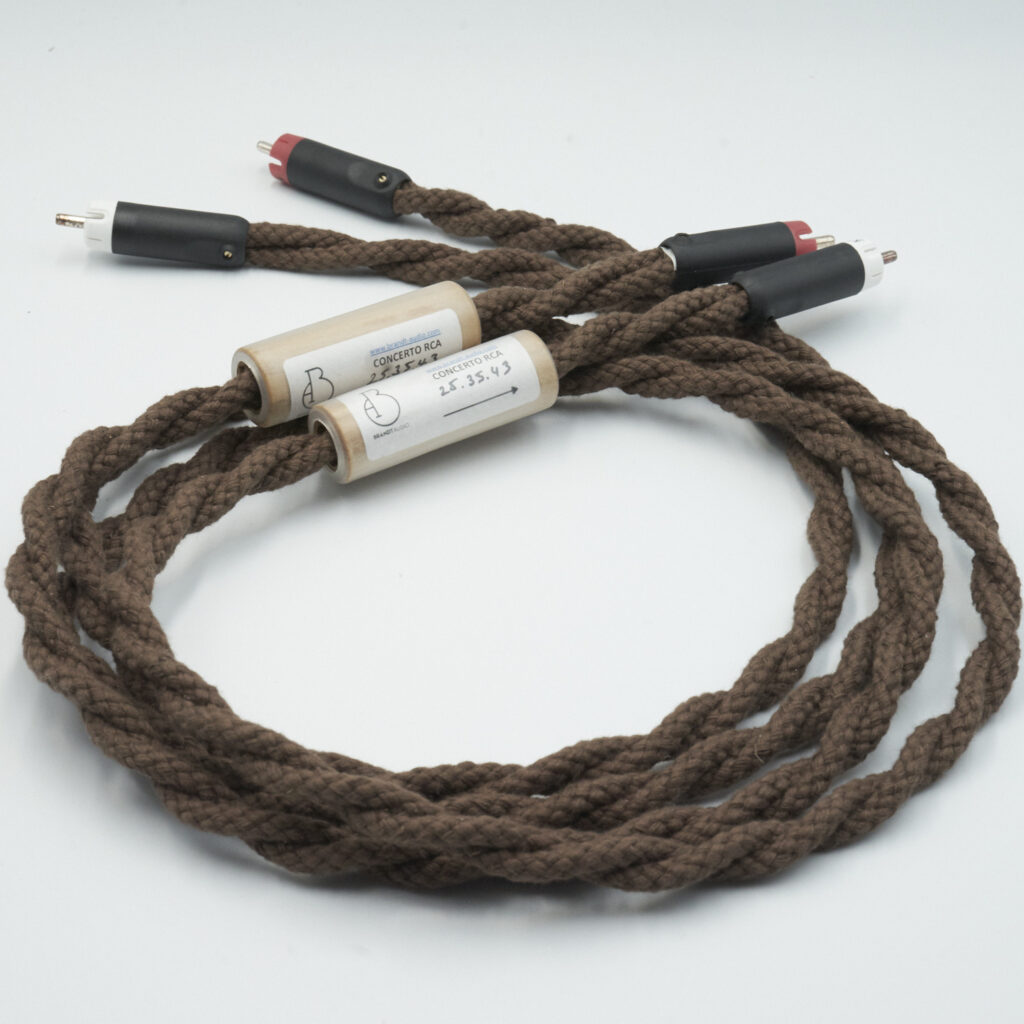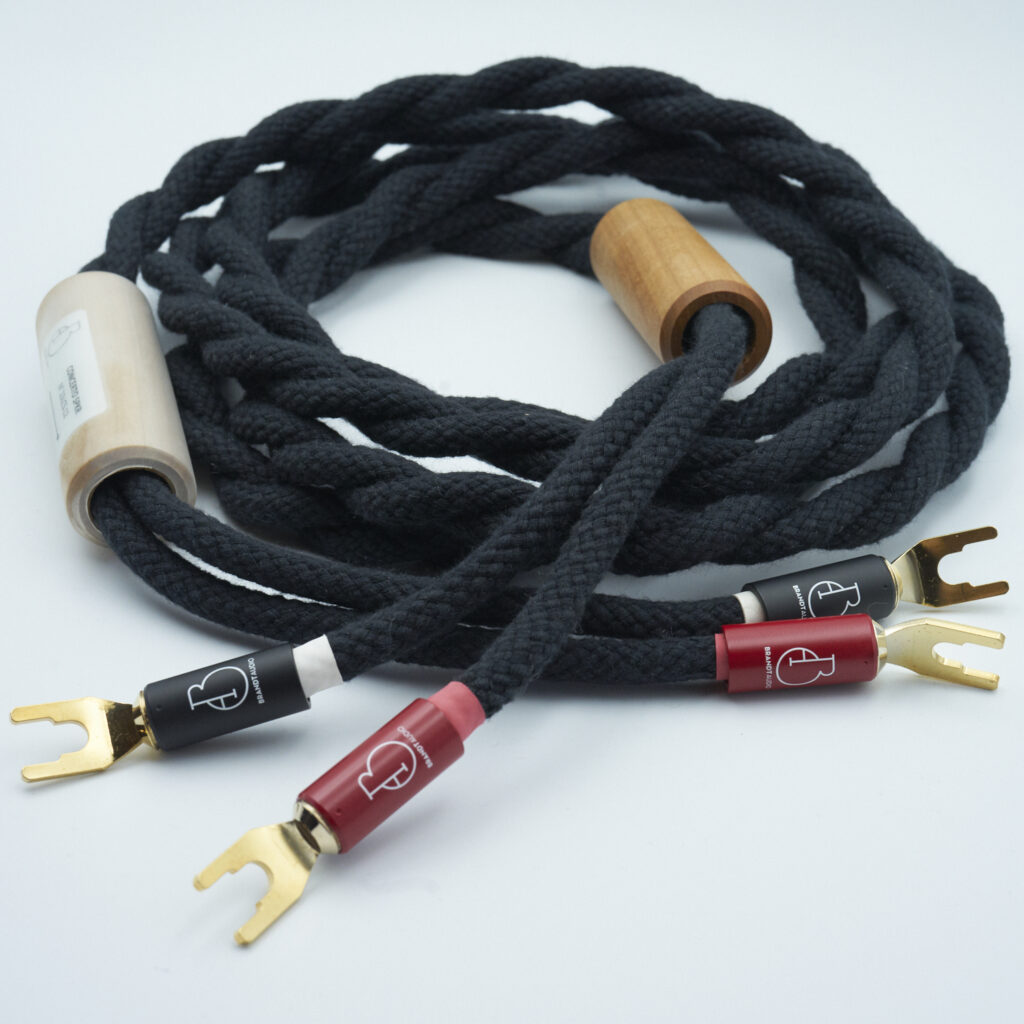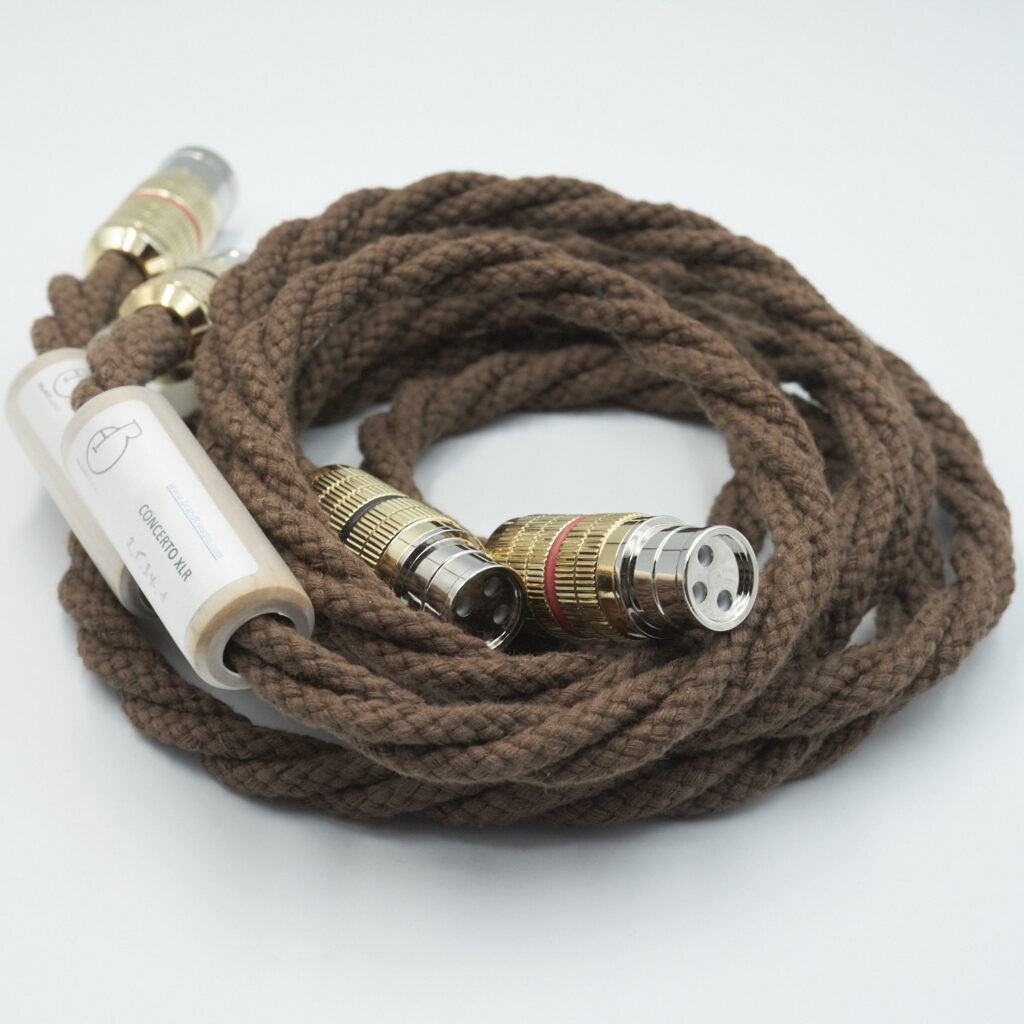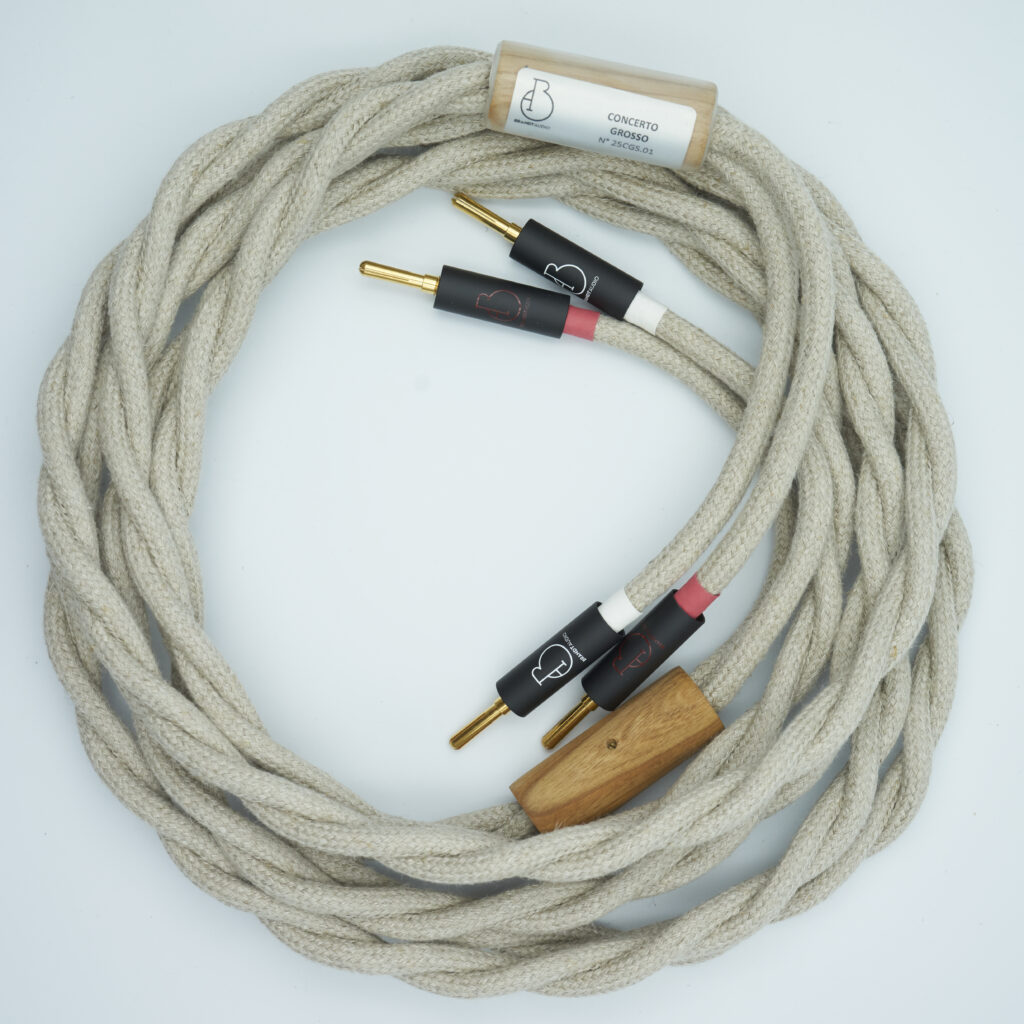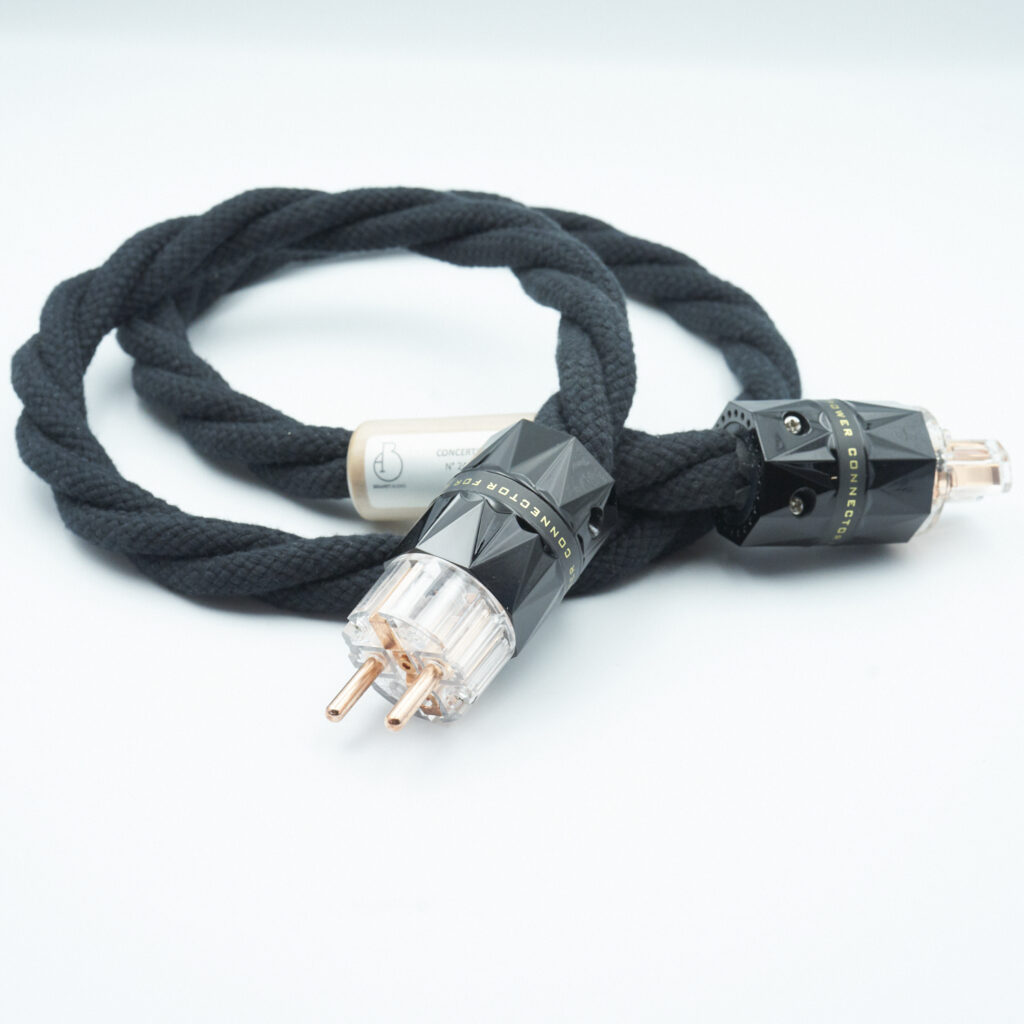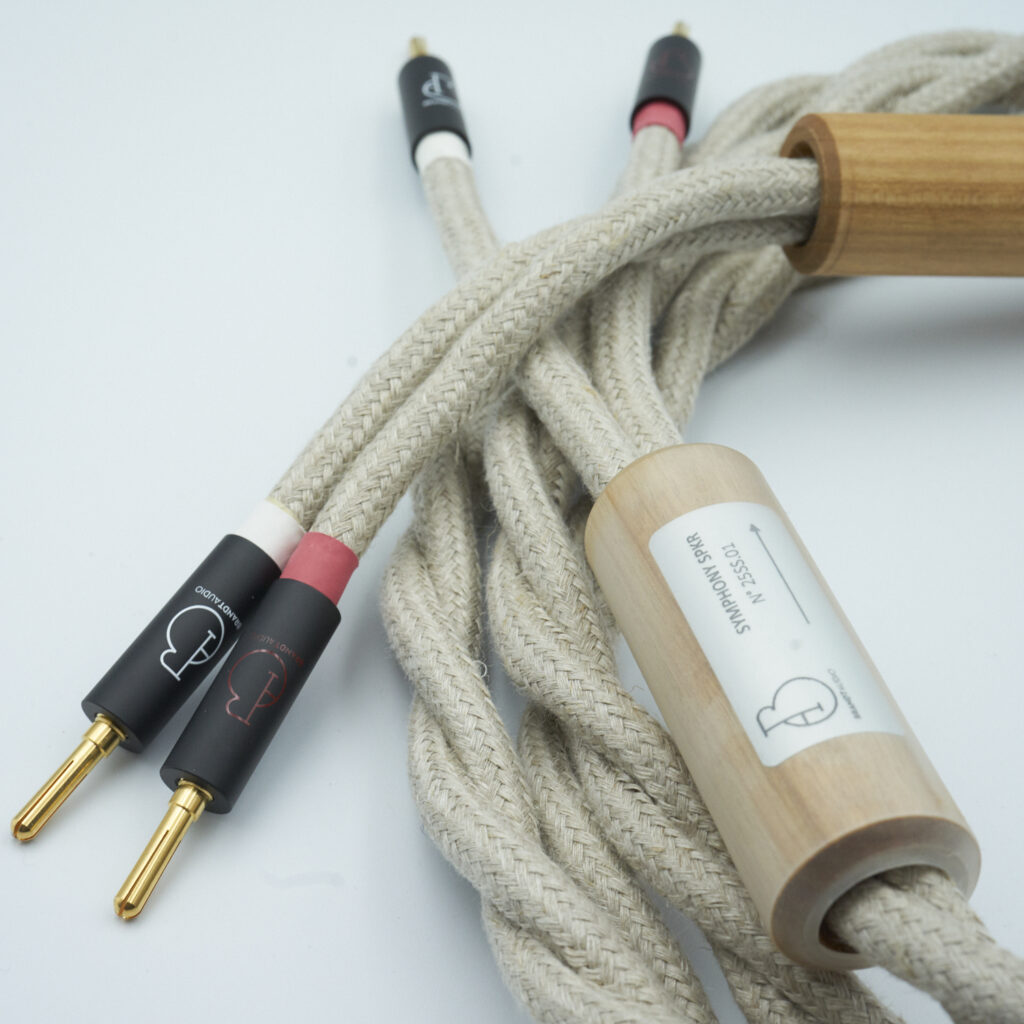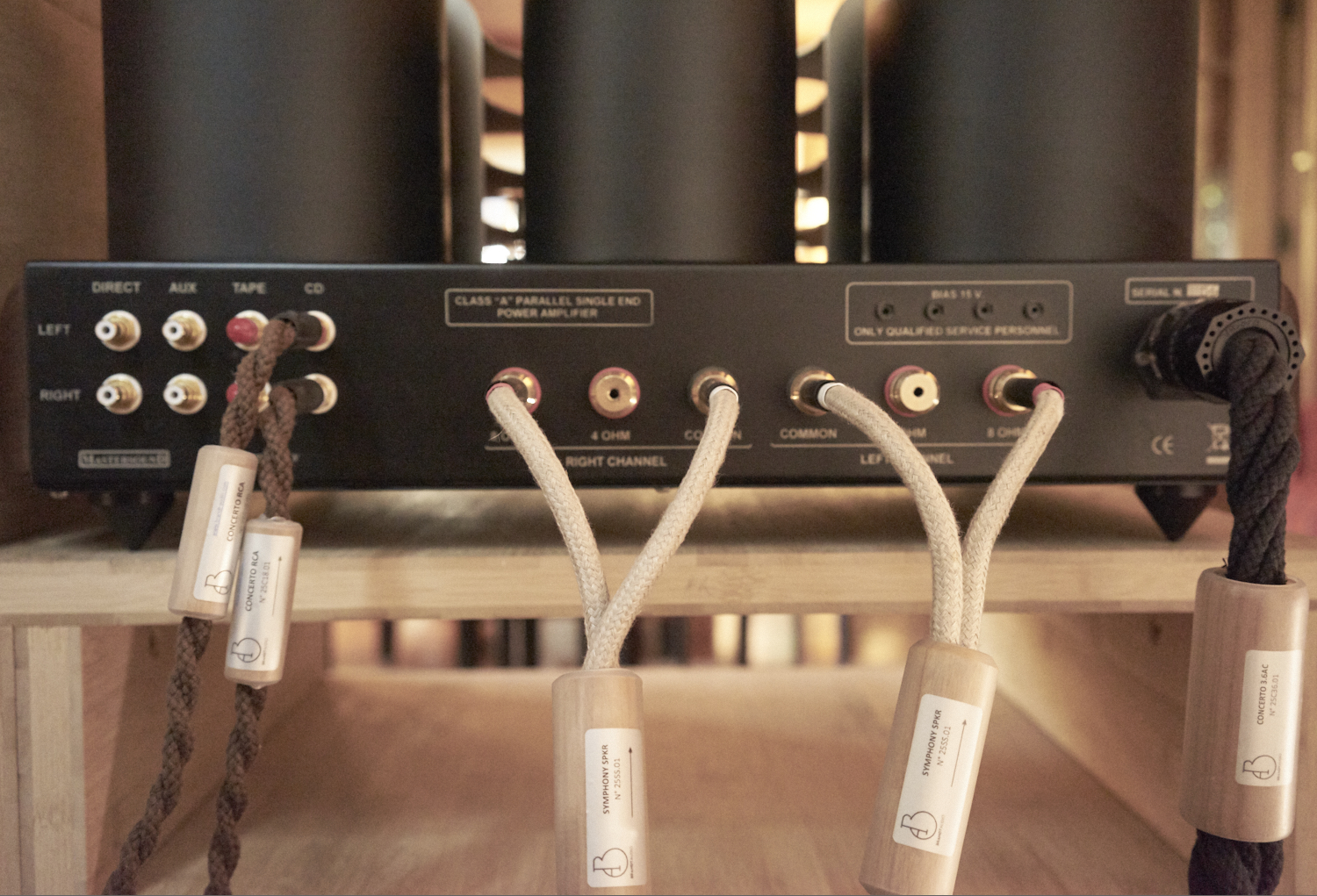The Brandt Audio Cables
And how to get the best from them.
Many customers ask why we insist on using classical, jazz and other acoustic music as the ultimate measure and development tool in our evolutionary process? Well, we do listen to all types of music but classical music has a combination of qualities it’s very hard to find elsewhere. Classical recordings capture not just the subtleties in a player’s performance, the way they place, space and shape notes, stretch phrases or alter their pace through them, their whole range of musical expression, but also the relationship between musicians and instruments captured in a single space. That performance embodies timbre and harmonics, dynamic shadings, musical give and take, complexities of rhythm and timing. It’s the sum of not only the instruments but the people playing them, their physical energy and the human links between them.
Classical music can comprise a single instrument or voice, or hundreds, playing all at once. Within classical music we can find the subtlest nuance or the greatest dynamic swing, the most delicate moment or shattering impact. This combination of the small and the large, the instrumental and the human, the spatial and the harmonic presents any system and any cable with its sternest test. Many cables can sound fine on heavily mixed and produced pop and rock music, with its heavy, synthesised bass and multi-track mixes, but fail to communicate the complex patterns and interactions of an acoustic band. Yet a cable that can capture the life, energy and emotional charge in an acoustic performance – that cable will play anything.
Brandt Audio hand-builds a single, extended family of audio cables – our Concerto series. Every cable shares the same conductors, and construction and every cable uses organic insulators, chosen to match their specific function. Our cables are low mass, low capacitance and low(physical) volume – a combination that adds up to extremely low-loss designs.
The absence of shielding, fillers, dielectric absorption or mechanical damping means the preservation of low-level detail and energy, no compression or rounding of dynamic peaks. They are, in every sense, a light-touch solution that passes the fragile audio signal between your components with the minimum intrusion or influence. How do they sound? We work very hard to ensure that they barely ‘sound’ at all, leaving the recording and the music free to speak for itself.
The Cable Family
The Concerto series
Concerto Interconnect (RCA) : Twisted pairs of 17 litz wires silk insulated, 22 AWG, cotton sheath, KLEI RCA.
Concerto Interconnect (XLR) : Twisted pairs of 17 litz wires silk insulated, 22 AWG, cotton sheath, Cardas XLR.
Concerto Speaker Cable (SPKR) : Twisted pairs of 21 litz wires silk insulated, 14 AWG, BRANDT-AUDIO 5μ gold plated bananas, cotton sheath. (Option 5μ gold plated forks).
Concerto Bi-Wire Jumpers (JMPR) : forks to bananas.
Concerto 3.6 AC Power Cable : Twisted pairs of 42 litz wires silk insulated, 12 AWG, US, EU, 15A or 20A IEC, cotton sheath.
Concerto 1.8 AC Power Cable : Twisted pairs of 21 litz wires silk insulated, 14 AWG, US, EU, 15A IEC, cotton sheath.
Tempo Digital BNC : Clock Rhodium no nickel BNC, under 100 cm, 25 litz wires silk insulated, AWG 42, not shelted.
Tempo Digital RCA : s/pdif KLEI RCA , under 125 cm, 12 litz wires silk insulated, AWG 42, cotton sheath, not shelted.
The Concerto Cables
Like the musical form they’re named for, the Concerto cables offer a perfect balance between solo instruments or the orchestra, a single voice or a whole band. That natural balance reveals the musical conversation and the artist’s expression, it allows the music to breathe and brings the performance to life.
Because different systems offer a different balance, especially once they are installed, we also offer a choice of speaker cables, to better tune your speakers to your system and your room.
The Concerto Grosso
Concerto Grosso Speaker Cable (SPKR) : Twisted pairs of 37 litz wires silk insulated, 16 AWG, BRANDT-AUDIO 5μ gold plated bananas, linen sheath (Option 5μ gold plated forks).
Concerto Grosso Bi-Wire Jumpers (JMPR) : forks to bananas.
Concerto Grosso Speaker Cable
With more strands but a smaller cross-sectional area, Concerto Grosso delivers more air and light to the performance and acoustic space. Its vivacious performance is particularly suited to warmer systems and rooms.
The Symphony
Symphony Speaker Cable (SPKR) : Twisted pairs of 21 litz wires silk insulated, 14 AWG, BRANDT-AUDIO 5μ gold plated bananas, linen sheath (Option 5μ gold plated forks).
Symphony Bi-Wire Jumpers (JMPR) : forks to bananas.
Symphony Speaker Cable
The Symphony cable offers deeper, clearer bass, with more instrumental texture, an increased sense of acoustic space, musical dynamics and dimensionality – but with no slowing of rhythm and pace, no reduction in musical intimacy or drama. As its name suggests, it is the ideal choice in larger systems or to bring scale and clarity to the performance of smaller ones.
Discontinued Cables
(highly appreciated and still available in certain lengths).
Wagner II Speaker Cable (SPKR) : Twisted pairs of 37 litz wires silk insulated, 16 AWG, BRANDT-AUDIO 5μ gold plated bananas, black nylon sheath.
Coltrane Speaker Cable (SPKR) : Twisted pairs of 21 litz wires silk insulated, 14 AWG, BRANDT-AUDIO 5μ gold plated bananas, black nylon sheath.
Verdi II Speaker Cable (SPKR) : Twisted pairs of 21 litz wires silk insulated, 14 AWG, BRANDT-AUDIO 5μ gold plated bananas, black nylon sheath.
Brandt Audio Cables and Best Practice
When we describe our cable range as a family, we really do mean it. Our low-loss approach to signal transfer means that the best way to hear Brandt Audio cables is to use them right through your system. But we understand that often, switching cables in a system is an operation that necessarily proceeds by stages. We strongly recommend hearing what a complete set of Brandt Audio cables can do for your system, even if you can’t change every cable at once. If you have to make the change, one cable at a time, where should you start? The answer is simple: at the beginning!
Once the signal has passed through a lossy cable or one with a distinctive character, the damage done cannot be recovered. So, start by inserting the Brandt Audio cables on your source components and work through the system until you reach the speakers. The same is true for power cords: start with the one that comes from the wall to your distribution block and then cable the components in turn, from the front of the system.
The extreme flexibility and lack of shielding in the Brandt Audio cables makes dressing your cables easy but also important:
-
- Keep interconnects and speaker cables as far from power cords as possible. Where they must cross, try to space them and have them cross at right angles.
-
- Try to let interconnects hang naturally, without touching walls or, if possible, racks/shelves.
-
- Speaker cables will benefit from using cable risers to lift them off of the floor, but please use risers made from organic materials (bamboo blocks are very affordable and cost effective) and use as few as possible to support the cable properly.
-
- If you are using a single run of speaker cable on a bi-wired speaker, use matching bi-wire jumpers too. These should be cabled diagonally, with the red speaker cable connected to the mid/treble terminal and the black to the bass terminal, the jumpers used to connect the two red or the two black speaker terminals together.
-
- Periodically cleaning the connectors on your cables and the sockets on your equipment will deliver worthwhile musical results. We recommend a product like Deoxit ProGold contact cleaner for this purpose. Please ensure that all equipment is physically disconnected from the AC supply when cleaning connections. Choosing Brandt Audio Cables is a big step towards a musically satisfying system. But it’s only a start. A little care and attention to installing and maintaining your cables will take you further still.


